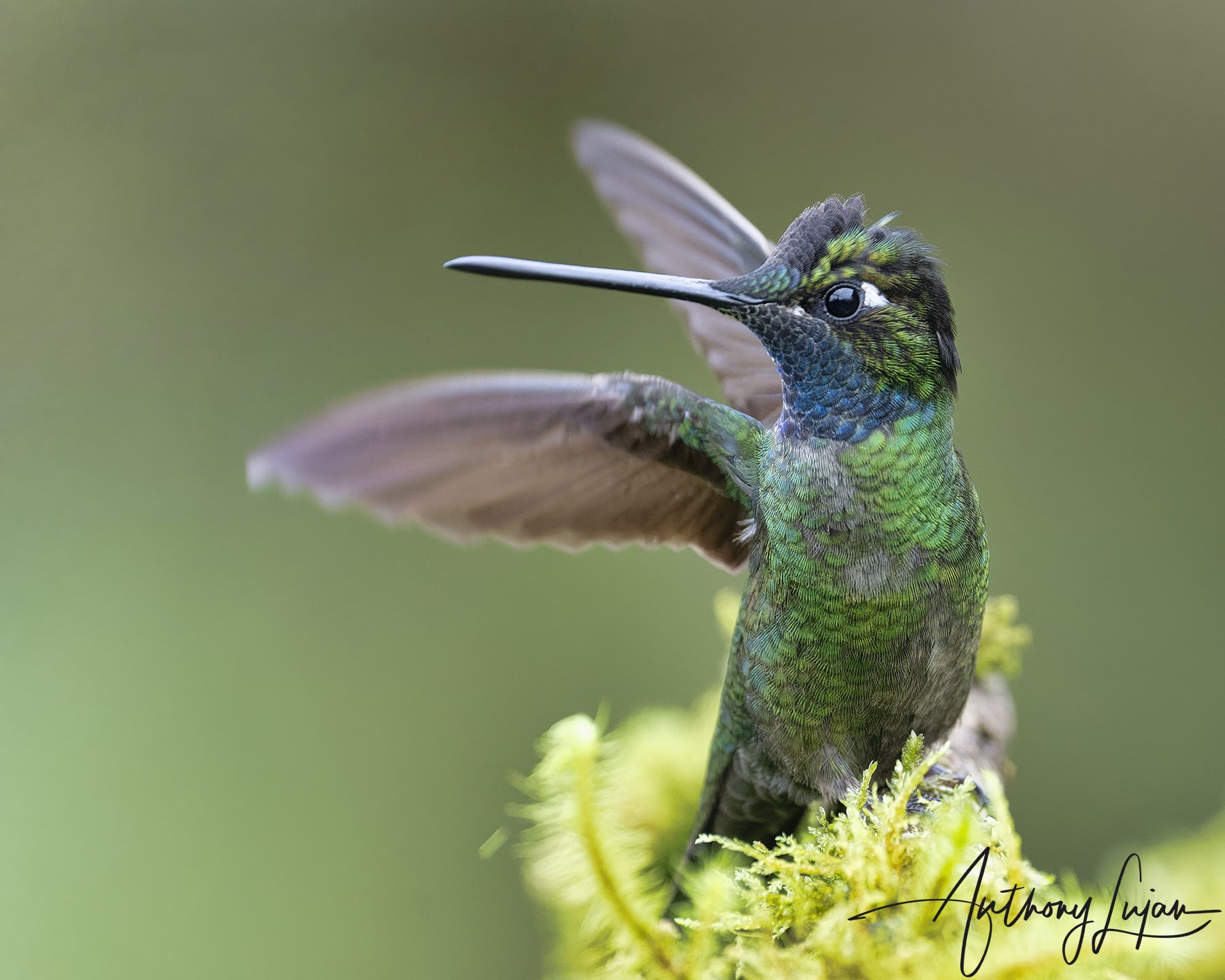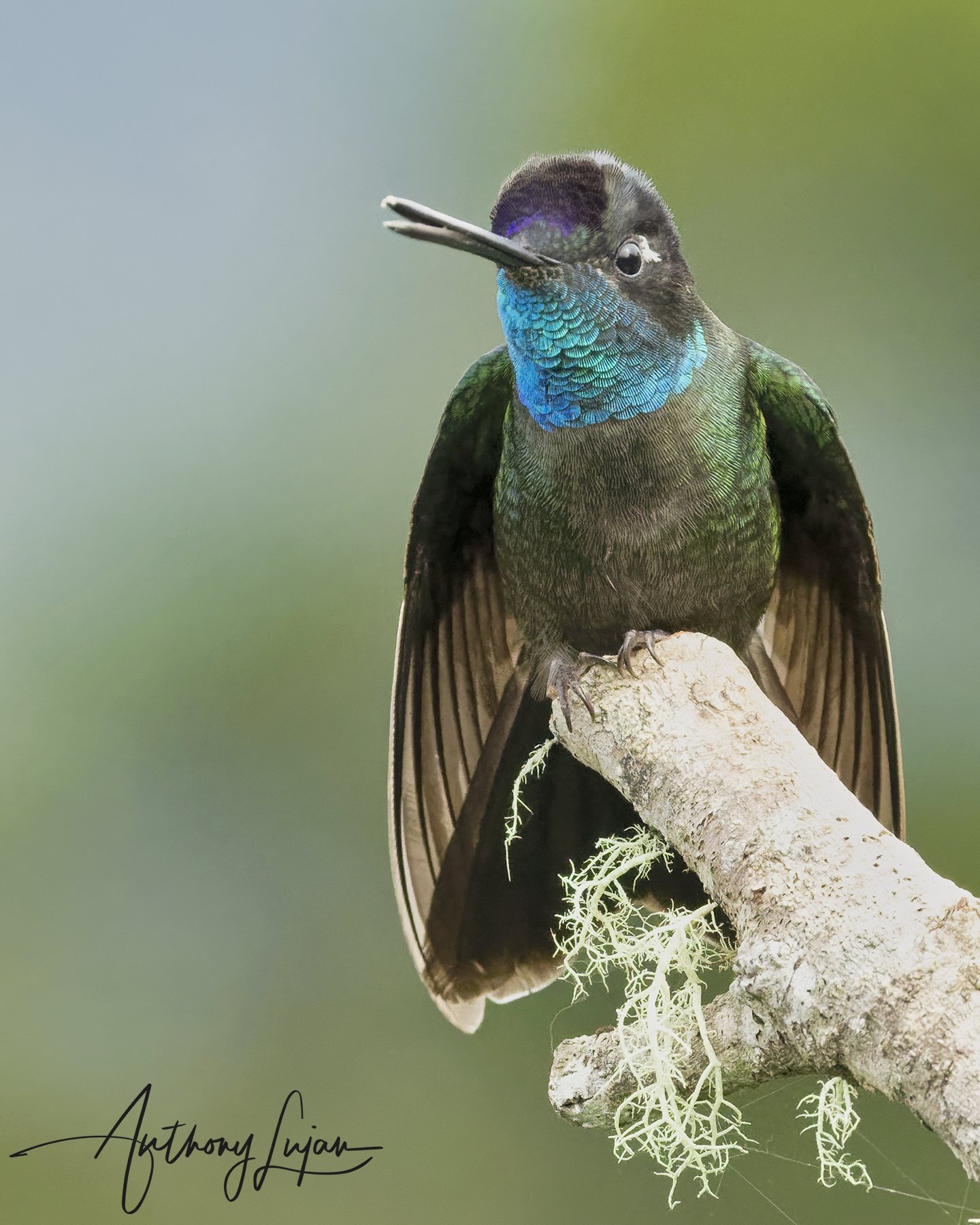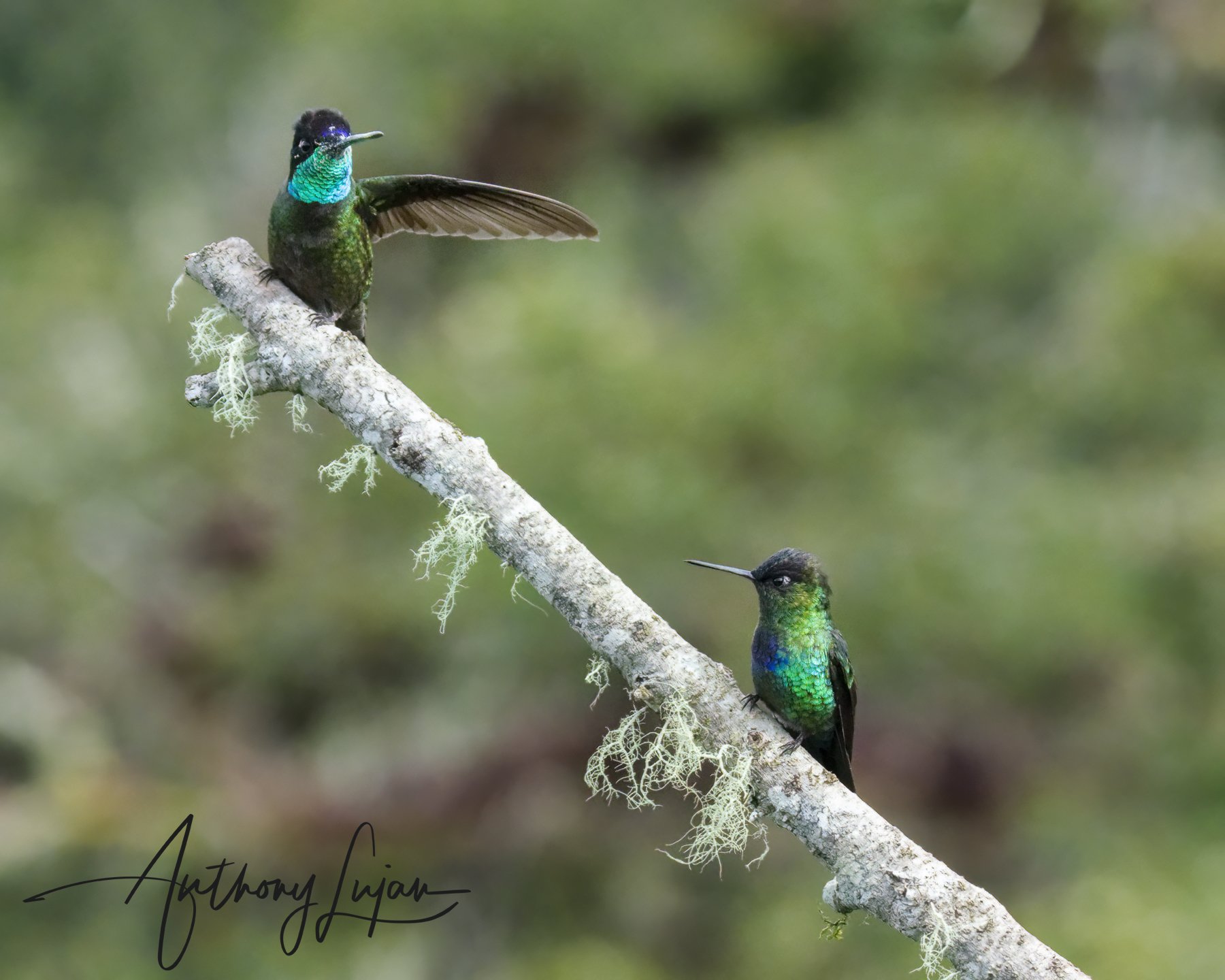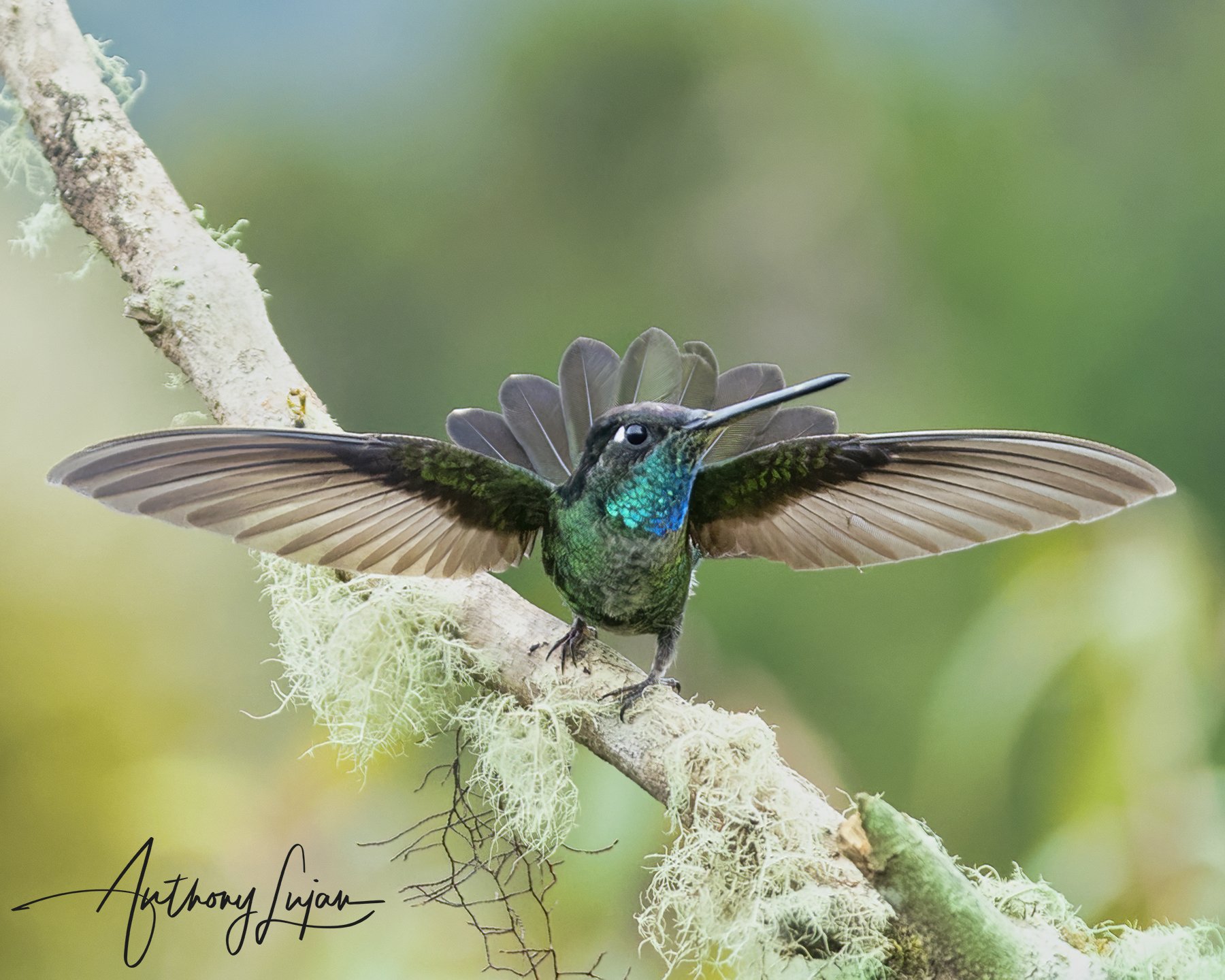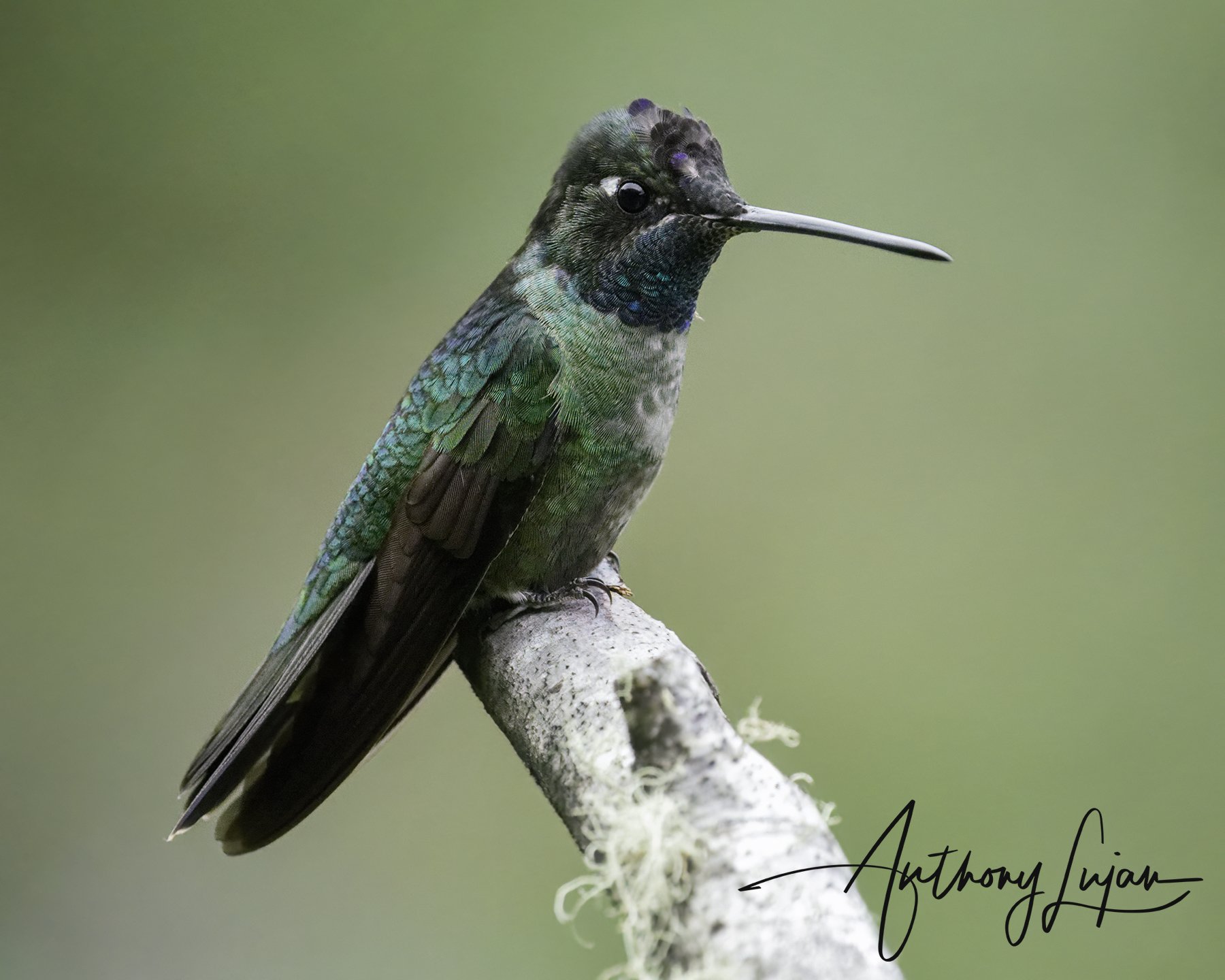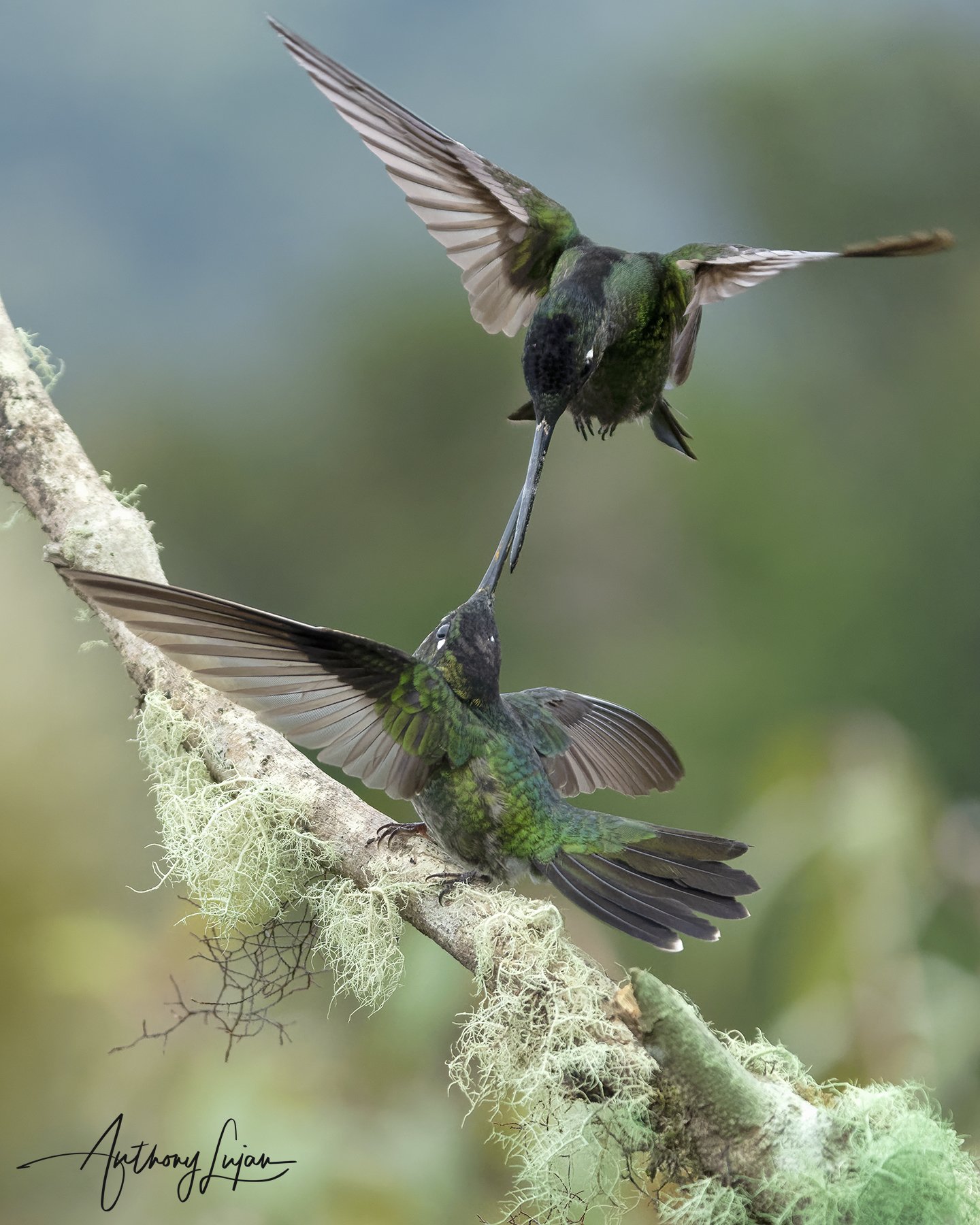Talamanca
Common name: Talamanca Hummingbird
Scientific name: Eugenes spectabilis
Clades: Lampornithini - Mountain-gems
The Talamanca Hummingbird is about 13 cm (5.1 in) long. The males weigh about 10 g (0.35 oz) and the females 8.5 g (0.30 oz).
The Talamanca Hummingbird is truly a spectacular sight to behold. Contrary to its smaller counterparts, this hummingbird stands out due to its relatively larger size, making it a distinctive and fascinating species.
The male Talamanca Hummingbird boasts a predominantly green plumage, concealing its mesmerizing features until the light unveils its true splendor. Upon closer examination, an iridescent purple crown and a shimmering turquoise throat come into view, capturing the essence of its magnificence. On the other hand, the females, although less striking in coloration, possess their unique charm with a fuzzy pattern adorning their gray underparts and hints of green on their sides. Notably, the females exhibit a conspicuous white spot behind the eye, reminiscent of smudged eyeliner, adding an alluring touch to their appearance. Moreover, the females are distinguished by their slightly longer and curved bills, setting them apart from their male counterparts.
Formerly identified as the Magnificent Hummingbird, the species has recently been reclassified, leading to the division into the Rivoli's Hummingbird, found in the southwestern United States to Nicaragua, and the Talamanca Hummingbird, which inhabits the mossy cloud forests of Costa Rica and Panama. This remarkable bird is a fairly common sight in its habitat and is known to frequent hummingbird feeders, captivating onlookers with its presence.
The Talamanca Hummingbird's grandeur and captivating features make it a symbol of natural beauty and wonder, serving as a testament to the breathtaking diversity of avian life in the Central American region. Its larger size, combined with its remarkable coloration and distinctiveness, truly epitomizes the essence of a natural marvel and serves as an awe-inspiring spectacle for all who are fortunate enough to encounter it.
Distribution in montane areas of Costa Rica and western Panama.
